Breathtaking Monsoon Treks and Nature Spots Near Pune
Breathtaking Monsoon Treks and Nature Spots Near Pune
Monsoon transforms the Sahyadri ranges around Pune into a lush green haven, dotted with waterfalls, foggy hills, and meandering trails. If you’ve been itching for a rainy season adventure, you’re in luck. Pune’s proximity to the Western Ghats makes it a paradise for monsoon lovers. Whether you’re a thrill-seeking trekker or a laid-back nature enthusiast, these breathtaking monsoon treks and nature spots near Pune will leave you enchanted, soaked, and wanting more
Rajmachi Fort – A Monsoon Marvel
Rajmachi Fort is a monsoon favorite, enveloped in dense fog and lush greenery during the rains. Located near Lonavala, this historical fort comprises two fortified peaks—Shrivardhan and Manaranjan. The trek to Rajmachi from Lonavala is a long yet serene route, offering panoramic views of waterfalls, forested paths, and ancient ruins.
The monsoon adds magic to the trail as water streams form along the path, and clouds float low enough to touch. For first-timers, the Udhewadi village base is ideal for setting camp or homestays, providing an authentic rustic experience. Don’t miss the fireflies around late June—they make the night trail feel enchanted.
Sinhagad Fort – A Blend of History and Mist
Only 30 km from Pune, Sinhagad Fort is the go-to weekend trek, especially during monsoon. The short but steep climb becomes more thrilling with slippery rocks and constant drizzle. What makes Sinhagad special during rains is the breathtaking view from the top, where you can see the clouds rolling over Pune city, and feel the mountain breeze as you sip on piping hot bhajiyas from the local stalls.
For history buffs, the fort offers glimpses into Shivaji Maharaj’s legacy and the Battle of Sinhagad. Monsoon elevates the charm, turning the dusty trails into muddy adventures—so wear good trekking shoes and carry an extra pair of clothes.
Lohagad Fort – The Iron Trek of Rainy Dreams
Lohagad Fort, meaning ‘Iron Fort’, lives up to its name with formidable architecture and a rugged monsoon trail. Situated near Malavli station, Lohagad is perfect for beginners. The most striking feature is the Vinchukata (Scorpion’s Tail) extension—an arm of the fort that coils like a scorpion’s sting, giving trekkers the illusion of walking through clouds.
The monsoon enhances every element: moss-covered stone steps, waterfalls gushing down the fort walls, and the overwhelming scent of wet earth. Since the trek is relatively simple, it’s ideal for family groups and photographers hoping to capture panoramic foggy vistas.
Visapur Fort – Thunderous Trails and Cloud-Kissed Views
Sharing the same base as Lohagad, Visapur Fort is its more challenging sibling. Its wide plateau and vast ramparts offer a more expansive exploration. During monsoon, this trail transforms into a thrilling ascent with natural waterfalls acting as staircases and a persistent cloud cover that makes the fort appear straight out of a fantasy novel.
The experience is as wild as it is rewarding. Carry waterproof gear, because you’ll likely be drenched—but happily so. The ruins of old cannons, stone houses, and caves scattered across the plateau add historical intrigue to the visual feast.
Torna Fort – The Highest Monsoon Adventure Near Pune
Torna, also known as Prachandgad, is the highest fort in Pune district, standing at over 4,600 feet. Known as the first fort captured by Shivaji Maharaj, this trek is steep and rigorous, best suited for seasoned trekkers. During monsoon, it becomes a mist-laden wonderland with winds so strong they can sway you off balance.
The flora bursts into life with colorful wildflowers, while the cloud-filled valleys create a surreal trekking environment. Due to its altitude and difficulty, it’s recommended to start early and go with a group or guide.
Kalsubai Peak – The Everest of Maharashtra
Though a bit farther from Pune (about 3-4 hours), Kalsubai Peak, the highest point in Maharashtra, deserves a spot on every monsoon trekking list. The trail includes iron ladders bolted into rock faces, grassy slopes, and ridge walks—all soaked in monsoon glory.
Standing at 5,400 feet, reaching the summit is a feat that offers unfiltered views of surrounding peaks shrouded in clouds. Trekkers often begin the hike early morning or even at midnight for a sunrise summit. The weather is unpredictable during monsoon, so proper gear and a cautious approach are essential.
Andharban – The Dark Forest Trail
True to its name, Andharban (meaning “dark forest”) is a dense jungle trail descending through the Western Ghats, starting from Pimpri village near Tamhini. Unlike typical treks that climb up, Andharban is a descending trail leading through a thick forest canopy.
During monsoon, it’s a symphony of dripping trees, flowing streams, and the occasional sound of distant waterfalls. It’s less about conquest and more about immersing yourself in nature’s raw, wet, and beautiful side. Expect lots of leeches, so be prepared!
Harishchandragad – A Dreamy Misty Getaway
This ancient hill fort located in Ahmednagar district is famed for Konkan Kada—a cliff that creates a 1,800-foot vertical drop and offers sweeping views of the valley. Come monsoon, Harishchandragad looks like it belongs in a fantasy film.
Multiple routes lead to the top, with the Nalichi Vaat trail reserved for expert climbers. The combination of cloud-play, gushing waterfalls, and ancient temples along the trail makes this one of the most spiritually and visually enriching monsoon treks near Pune.
Ratangad Fort – Mist, Moss, and Majesty
Ratangad, often known as the “Jewel of the Sahyadris,” is surrounded by the Bhandardara backwaters. With its iconic “Nedhe” (a natural rock cavity in the mountain that looks like a giant hole), the fort becomes surreal in the rains.
Trekking here feels like navigating through a fairytale—every step surrounded by thick moss, monsoon wildflowers, and constant fog. Base villages like Ratanwadi offer a cultural touchpoint and make great starting points.
Tikona Fort – Easy Yet Scenic Monsoon Trek
A pyramid-shaped fort, Tikona is perfect for a short monsoon trek with panoramic views of Pawna Lake and the nearby hills. Its easy incline and scenic beauty make it popular among beginner trekkers and families.
The real magic of Tikona lies in its vantage points that offer dramatic cloud movements and windswept ambiance during monsoon months. Quick to climb, rich in views—Tikona offers bang for your buck (or your boots).
Dukes Nose – Thrill with a View
Named after the Duke of Wellington’s nose (which the peak is said to resemble), Dukes Nose near Lonavala is a favorite for thrill-seekers. Apart from trekking, it’s a popular spot for rappelling and rock climbing.
The trail becomes slick and misty in the monsoon, adding an extra layer of excitement. From the top, trekkers are rewarded with an eye-level view of the rain clouds swirling across the valleys below. Not for the faint-hearted, but absolutely rewarding for adrenaline junkies.
Mulshi Lake – Misty Reflections and Serenity
Mulshi Lake, a short drive from Pune, becomes a glassy wonderland during monsoon. With the surrounding Sahyadris cloaked in mist and rain-fed streams feeding the reservoir, the area transforms into a peaceful paradise. Whether you’re looking for a serene picnic, a cozy lakeside resort stay, or just some quietude away from the city, Mulshi checks all boxes.
The route to Mulshi itself is a treat—lined with small waterfalls, vibrant flora, and roadside vendors selling hot corn and vada pavs. Photographers and couples will especially enjoy the ambiance that’s dripping with romance and tranquillity.
Pawna Lake – Peace by the Waterside
Another gorgeous monsoon destination, Pawna Lake is renowned for its lush green banks, surrounding hills, and peaceful camping options. Located near Lonavala, it’s a fantastic weekend getaway where you can wake up to misty sunrises and fall asleep to the sound of raindrops on your tent.
During the rainy season, the lake swells, the skies dance with dramatic clouds, and everything around feels fresh and alive. It’s a great spot for non-trekkers who just want to be close to nature without too much physical effort.
Tamhini Ghat – A Symphony of Waterfalls and Greener
Tamhini Ghat is one of the most scenic monsoon routes near Pune. Located on the road to Mulshi, it is packed with panoramic views, natural waterfalls, and dense fog that rolls over the hills like a soft blanket.
The ghat is ideal for monsoon drives or rides—especially if you’re into photography or looking for those dramatic, nature-drenched Instagram reels. With almost every turn offering a new waterfall or green-covered cliff, Tamhini Ghat feels like an open-air monsoon theater.
Bhimashankar – Sacred Trails and Clouded Bliss
A UNESCO-recognized biodiversity hotspot, Bhimashankar is both a sacred pilgrimage site and a lush forest reserve. Home to one of the 12 Jyotirlingas of Lord Shiva, it’s a favorite among spiritual trekkers and nature lovers alike.
Monsoon wraps Bhimashankar in a veil of clouds and rain-soaked greenery. The Gupt Bhimashankar trek is particularly popular in the rainy season, as it winds through dense forests, past gurgling brooks, and across slippery stone trails. Watch out for the Giant Indian Squirrel—it’s as colorful as the forest itself!
Lavasa – A Rainy Urban Escape Amidst Nature
Though controversial in its development, Lavasa offers a blend of urban design and natural beauty. The monsoon season brings life to its otherwise quiet promenades, with lush hillsides, flowing streams, and fog-laden lakeside roads.
It’s a great choice for those looking to enjoy nature with modern comforts like cafes, resorts, and spa treatments. The drive to Lavasa is arguably one of the best parts, especially when rain dances on your windshield and mist blankets the valley roads.
Lonavala and Khandala – Twin Rainy Retreats
No list of monsoon spots near Pune is complete without Lonavala and Khandala. These hill stations are synonymous with monsoon travel for Punekars. From Tiger’s Leap and Bhushi Dam to the lesser-known Kune Falls, the region is packed with spots to soak in the rain.
During monsoon, the entire twin-town region becomes a riot of waterfalls, green meadows, and bustling roadside snack stalls. It’s perfect for a romantic getaway, a fun family trip, or even a solo recharge day.
Malshej Ghat – Misty Mountains and Flamingos
About 3 hours from Pune, Malshej Ghat is a majestic blend of cliffs, valleys, and waterfalls. What makes it even more special is the arrival of flamingos during the early monsoon—a unique sight against the green backdrop.
Known for its hairpin bends, ancient rock-cut caves, and winds strong enough to lift your umbrella, Malshej is for the wild-hearted. A trekker’s delight and a photographer’s dream, this ghat stays uncrowded compared to Lonavala, making it perfect for offbeat monsoon escapes.
Panshet Dam – Monsoon Bliss for Families
Just 50 km from Pune, Panshet Dam offers calm waters, rolling hills, and family-friendly vibes. Popular for boating and picnics, this spot is ideal for day-trippers who don’t want to trek but still want to enjoy monsoon nature.
With good road connectivity and several dhabas lining the route, Panshet is a relaxed monsoon escape. It’s also perfect for teaching kids the joys of natural beauty during the rainy season—watching rainbows, feeling cool mist, and jumping in roadside puddles.
Rajgad Fort – Trekking Back in Time
Rajgad isn’t just another monsoon trek—it’s a deep dive into history. Known as the capital of the Maratha Empire during Shivaji’s reign, this fort sits proudly surrounded by thick monsoon forests and swirling clouds.
Baneshwar – Forest, Temple, and Waterfalls
Located about 40 km from Pune, Baneshwar is a lesser-known gem that offers a peaceful monsoon experience. The old Shiva temple here is surrounded by dense forest trails and small but beautiful waterfalls that come alive during the rains.
Ideal for families and photographers, Baneshwar offers spiritual calmness and natural splendor without the crowds. The forest walk here, wet with dew and echoing with bird calls, is therapeutic in every sense.
Safety Tips for Monsoon Treks Near Pune
Monsoon treks are beautiful but can be risky without precautions. Trails can become slippery, fog can reduce visibility, and streams may swell unexpectedly. To stay safe:
- Always trek in groups or with a local guide.
- Start early to avoid getting caught in heavy evening rains.
- Stick to marked trails—shortcuts can be dangerous.
- Avoid crossing fast-flowing streams without assistance.
- Carry a small first aid kit with antiseptics, band-aids, and anti-leech powder.
Avoid high-altitude treks during heavy rains or thunderstorms, and always inform someone about your route and expected return time.
What to Pack for Monsoon Treks
Packing wisely is crucial to enjoy monsoon treks. Here’s what you should carry:
- Waterproof backpack: With a rain cover.
- Quick-dry clothing: Avoid denim and cotton.
- Rain gear: Poncho or a good raincoat, and waterproof shoes with a strong grip.
- Extra socks and clothes: You will get wet—guaranteed.
- Trekking pole: For balance on slippery slopes.
- Snacks and hydration: Energy bars, ORS, and at least 2L of water.
- Garbage bag: For waste disposal—be a responsible trekker.
Don’t forget a power bank, ID cards, and local emergency contact numbers.
Best Time to Explore Monsoon Spots Near Pune
The monsoon in Maharashtra typically spans from mid-June to early September, but the best time to explore these treks and nature spots is late June to August. This is when:
- The greenery is at its peak.
- Waterfalls are full and dramatic.
- Trails are lush but not overly dangerous.
Avoid venturing out during red or orange rainfall alerts as issued by the IMD (India Meteorological Department). Also, weekdays often have fewer crowds, so plan accordingly.
Eco-Friendly Trekking Tips
Monsoon treks deserve protection and preservation. Here’s how you can trek responsibly:
- Carry reusable bottles and containers.
- Avoid plastic: Say no to disposable cutlery, wrappers, and bottles.
- Do not pluck plants or disturb wildlife.
- Follow ‘Leave No Trace’ principles: Pack out everything you pack in.
- Avoid loud music: Let nature be the soundtrack.
Supporting local guides and homestays also helps promote sustainable tourism and gives back to the community.
How to Reach These Locations from Pune
Most trekking destinations and nature spots near Pune are within a 50–150 km radius. Here are the common modes of travel:
- By Car/Bike: Ideal for flexibility, especially for Mulshi, Tamhini, Lavasa, and Sinhagad.
- By Train: Lonavala, Malavli (for Lohagad & Visapur), and Khandala have good train connectivity.
- By Bus: MSRTC and private buses connect Pune with towns near forts like Rajmachi, Malshej, and Bhimashankar.
Using Google Maps offline and local apps like m-Indicator can be very helpful for route planning during low-network areas.
Budget-Friendly Monsoon Travel from Pune
You don’t need deep pockets to enjoy these monsoon marvels. Here’s how to travel on a budget:
- Use local trains and buses for cheap transport.
- Stay in homestays or campsites instead of hotels.
- Travel with groups to share transportation costs.
- Pack your own food/snacks instead of relying on tourist eateries.
Weekend treks with friends can cost as little as ₹500–₹1000 if planned well!
Travel Etiquette and Responsible Tourism
Exploring nature comes with responsibility:
- Respect local customs and temple rules.
- Don’t trespass into farms or private properties.
- Always ask before photographing people.
- Be courteous to fellow trekkers and maintain trail discipline.
- Don’t litter or pollute water bodies—carry trash back with you.
Following these small steps keeps our natural treasures pristine for future adventurers.
Photography Tips for Monsoon Adventures
Monsoon landscapes are dreamy but tricky to capture. Here’s how to get the best shots:
- Use waterproof cases or bags for phones/cameras.
- Shoot early morning or post-rain when the fog is thick and light is soft.
- Focus on reflections, clouds, waterfalls, and raindrops.
- Experiment with slow shutter for silky waterfall effects.
- Don’t forget people shots—expressions in the rain are priceless!
Monsoon’s ever-changing moods make for powerful and poetic frames.
Local Food to Try While Trekking Near Pune
A monsoon trek is incomplete without devouring local Maharashtrian food. Here’s what to try:
- Kanda Bhaji (Onion fritters): Best enjoyed hot with tea in the rain.
- Vada Pav and Misal Pav: Spicy, filling, and perfect fuel.
- Zunka Bhakri: A rustic combo of gram flour curry and millet flatbread.
- Pithla Bhakri with Thecha: A spicy treat after a tiring trek.
- Freshly roasted corn on the cob with lemon-chili-salt seasoning.
Many forts have food stalls at the top—support them and get a taste of the local flavor.
Breathtaking Monsoon Treks and Nature Spots Near Pune
Whether you’re chasing the misty heights of Rajmachi, savoring the serenity of Mulshi Lake, or wandering through the enchanted darkness of Andharban, one thing’s for sure—the monsoon reveals a wilder, more romantic side of Pune’s surroundings.
With careful planning, the right gear, and a responsible attitude, your monsoon adventures can be as magical as they are memorable.
Monsoon in Pune isn’t just a season—it’s an experience, a transformation, and a celebration of nature’s grandeur. From thrilling treks to tranquil getaways, the region offers something for every soul. Whether you’re a local explorer or an international traveler planning your escape, platforms like Indian Eagle make it easy to book cheap flights from Atlanta to Pune, bringing you closer to the magic of the Western Ghats. Pack your bags, charge your camera, and let the rains guide your way into the lush wilds of Western Maharashtra.
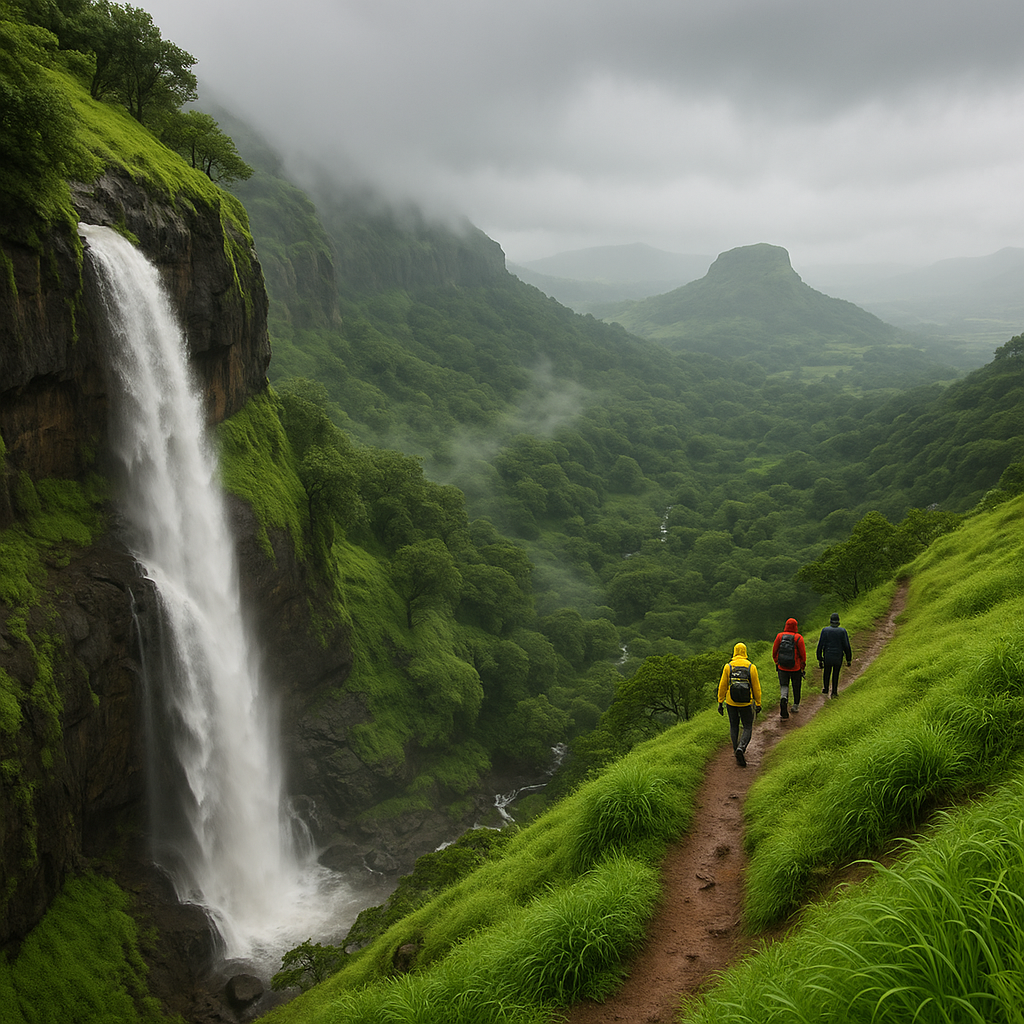
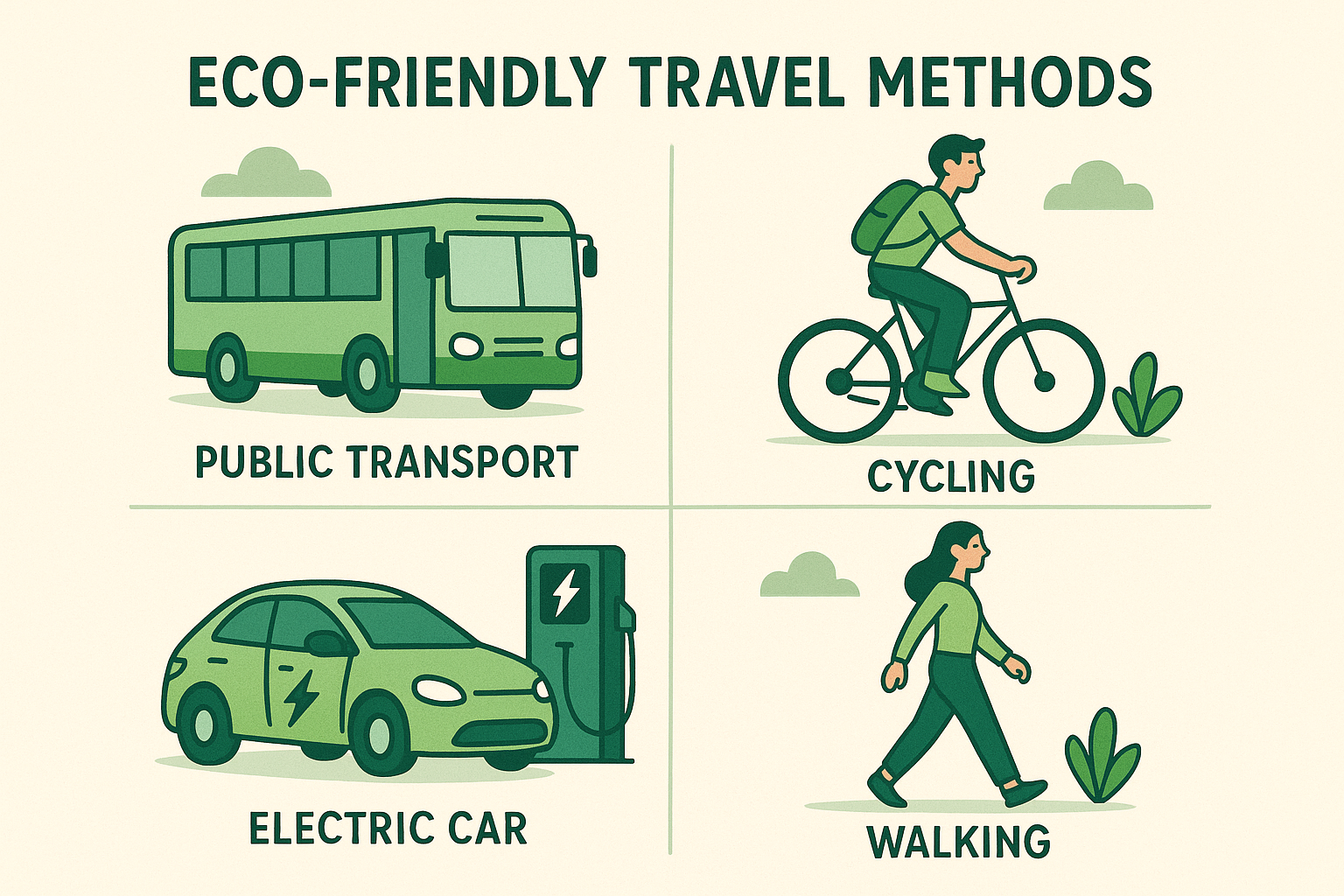
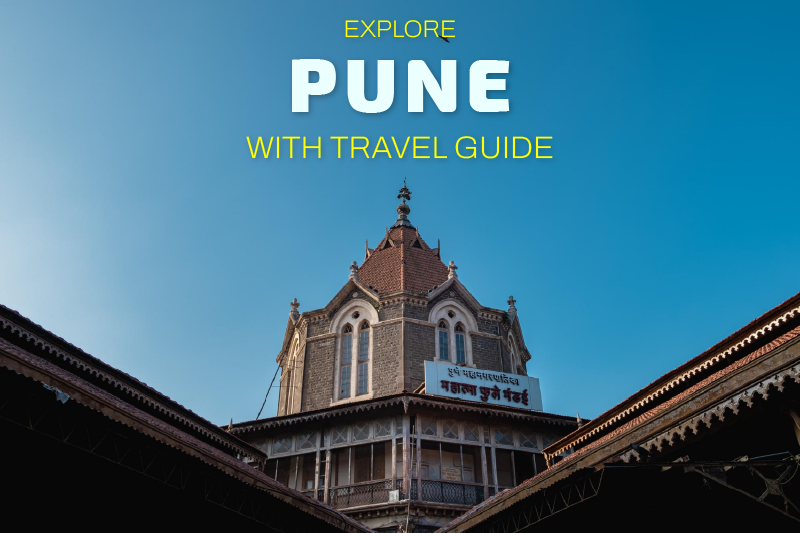

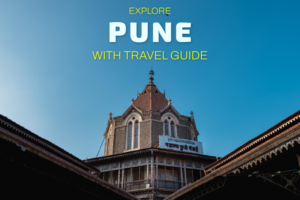
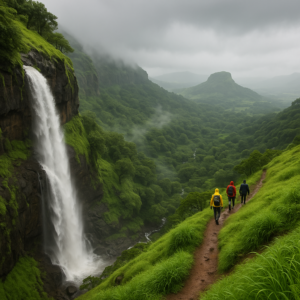

Post Comment